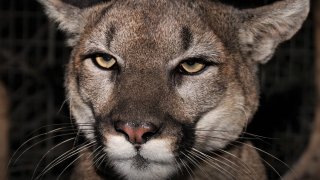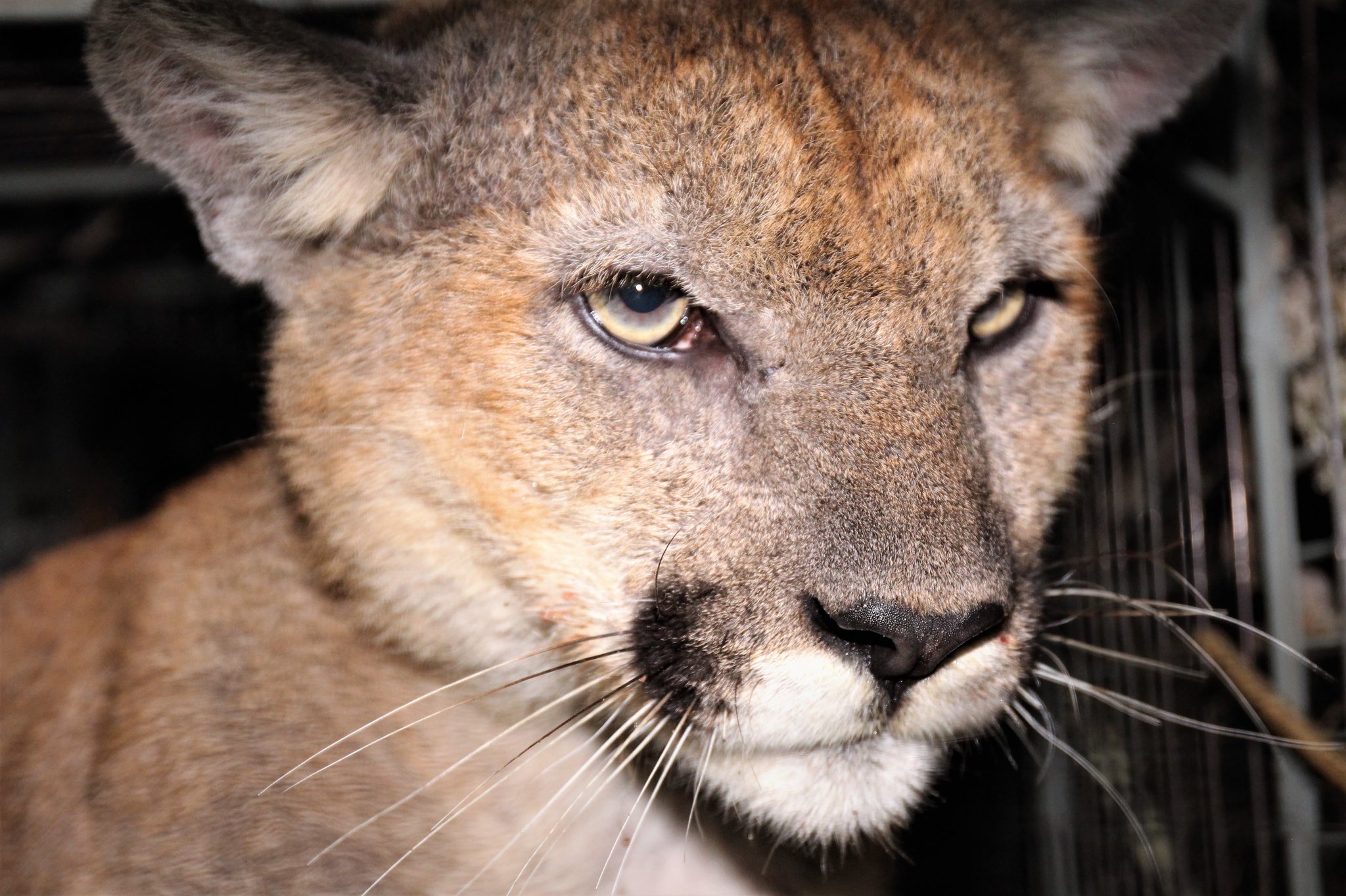
A mountain lion who was struck and killed by a vehicle in the Malibu area in June was pregnant with four kittens when she died, biologists said Wednesday.
P-54, who was being tracked by National Park Service researchers, and her four kittens also tested positive for multiple anticoagulant rodenticides, or rat poisons. An examination of her death June 17 on Las Virgenes Road between Piuma Road and Mulholland Highway marked a first for researchers involved a two-decade study of the cats.
"This is the first time during our 20-year study that we've been able to test mountain lion fetuses for anticoagulant rodenticides," Jeff Sikich, a biologist with the mountain lion project at Santa Monica Mountains National Recreation Area, said in a statement. "A primary goal of our work is to learn whatever we can about these animals and how their lives are affected by the urban landscape they inhabit. Unfortunately, we've learned that mountain lions are susceptible to rat poisons even before they are born. In this case, it is also unfortunate because the death of P-54 from a vehicle resulted in the loss of four other young mountain lions, two males and two females, that were about to enter the population."
Get top local stories in Southern California delivered to you every morning. Sign up for NBC LA's News Headlines newsletter.
P-54 had five types of rat poison in her system. The four full-term fetuses had at least three rat poisons in their systems. NPS researchers have documented anticoagulant rodenticide compounds in 39 out of 40 local mountain lions tested, including P-54's four fetuses.
The test results confirm that rat poisons and other toxicants are still widespread in wildlife in and near the Santa Monica Mountains Recreation Area, researchers said.
In September 2020, Gov. Gavin Newsom signed a bill to restrict the use of certain rat poisons that have been linked to the deaths of mountain lions and other wildlife. Second-generation anticoagulant rodenticides refer to any pesticide product containing brodifacoum, bromadiolone, difenacoum and difethialone as its active ingredients.
The case also illustrates the dangers posed by two significant sources of mortality for the big cats and other wildlife -- vehicles and toxicants. Traumatic injuries, including multiple fractures to the ribs and left femur, were the cause of P-54's death.
It is estimated that the mountain lion population in the Santa Monica Mountains could become extinct within 50 years without an influx of genetic diversity. The lions are largely isolated due to freeways that act as barriers to movement across the region.
Conservationists hope the $85 million Wallis Annenberg Wildlife Crossing, which will span the 101 Freeway in Liberty Canyon near Agoura Hills, will alleviate the problem when it is completed in 2025. It will be the largest crossing of its kind in the world -- a fully landscaped passage for wildlife that will stretch 210 feet over 10 lanes of highway and pavement.
The crossing aims to provide a connection between the small population of mountain lions in the Santa Monica Mountains and the larger and genetically diverse populations to the north.
P-54 was born in January 2017. She was marked with a tracking device the next month.
P-54's mother, P-23, was fatally struck by a vehicle in January 2018 on the same road. One of P-54's offspring, P-97, was fatally struck by a vehicle on the 405 Freeway near Getty Center in April of this year.
There are about 4,000 to 6,000 mountain lions in California, but wildlife officials call that a crude estimate without an ongoing statewide study. More than half of the state is considered prime habitat for the big cats, which can be found wherever deer are present.
The California Department of Fish and Wildlife receives hundreds of mountain lion sighting reports each year. Few result in mountain lions being identified as posing an imminent threat to public safety, the department said. Mountain lion attacks on humans are extremely rare and their nature is to avoid humans.



